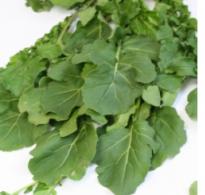How many kcal are in 100 g of tomato. Pros of the tomato diet
Tomatoes are saturated with vitamins A, B1, B2, B5, B6, B9, C, PP, K, H, E, minerals calcium, potassium, magnesium, chlorine, phosphorus, cobalt, iodine, iron, molybdenum, copper, manganese, fluorine, selenium, zinc, chromium.
Calorie content stewed tomatoes per 100 grams 21 kcal. In 100 g of dish:
- 1.15 g protein;
- 0.63 g fat;
- 3.25 g carbohydrates.
Almost all vitamins and minerals are preserved in stewed vegetables. Unlike fresh product such tomatoes very rarely provoke allergic reactions, are suitable for inclusion in the diet for almost any diet.
To stew tomatoes, you need:
- rinse 1 kg of fresh vegetables, set aside washed tomatoes for 1 minute in boiling water;
- remove the skin from cooled tomatoes;
- place the vegetables in a baking dish, add salt, herbs to taste, a few tablespoons of vegetable oil;
- stew tomatoes under closed lid in the oven for 25 minutes at 140 degrees.
Calorie content of sun-dried tomato per 100 grams
The calorie content of sun-dried tomato per 100 grams is 259 kcal. Per 100 g snack:
- 14.2 g protein;
- 2.9 g fat;
- 43.6 g carbohydrates.
Sun-dried tomatoes are enriched with vitamins B, C, PP, minerals sodium, phosphorus, potassium, magnesium, calcium. The beneficial properties of sun-dried tomatoes are:
- the product normalizes the functioning of the gastrointestinal tract, helps get rid of constipation;
- thanks to the content in sun-dried tomatoes hormones of happiness, when included in the diet, depression is prevented and functioning is restored nervous system;
- dried vegetables are indicated for the prevention of blood clots and swelling.
Calorie content of tomatoes in their own juice per 100 grams
Calorie content of tomatoes in own juice per 100 grams 24.7 kcal. In 100 g of product:
- 1.22 g protein;
- 0.6 g fat;
- 3.7 g carbohydrates.
Tomatoes in their own juice are rich in potassium, calcium, phosphorus, and magnesium. At regular use Such vegetables restore the functioning of the gastrointestinal tract, prevent constipation and vitamin deficiency, and reduce the risk of developing prostate cancer in men.
Calorie content of fried tomatoes per 100 grams
Calorie content fried tomatoes per 100 grams 56 kcal. In a 100-gram serving of the dish:
- 0.9 g protein;
- 4.3 g fat;
- 3.9 g carbohydrates.
To prepare, you need to cut the tomatoes into slices, fry the chopped vegetables in a frying pan with vegetable oil. Add salt, herbs and spices to taste.
With such heat treatment tomatoes lose almost all of their beneficial properties. In addition, the dish has a fairly high fat content, so it is contraindicated in case of exacerbation of diseases of the liver, gall bladder, or pancreas.
Calorie content of canned tomatoes per 100 grams
Calorie content canned tomatoes per 100 grams 17 kcal. In 100 g of product:
- 1 g protein;
- 0 g fat;
- 3.3 g carbohydrates.
The composition of the product is represented by tomato juice, table salt and tomatoes without skin. These tomatoes have zero fat content, low calorie content, therefore suitable for inclusion in the diet during dieting and weight loss.
Calorie content of dried tomatoes per 100 grams
Calorie content dried tomatoes per 100 grams 354 kcal. Per 100 g snack:
- 12.9 g protein;
- 0.5 g fat;
- 74.6 g carbohydrates.
The composition of the product consists of dried tomatoes and salt. Such tomatoes contain vitamins B1, B2, B3, B5, B6, B9, A, C, K, minerals calcium, magnesium, iron, potassium, phosphorus, copper, zinc, selenium, manganese, sodium.
Calorie content of baked tomatoes per 100 grams
Calorie content of baked tomatoes per 100 grams is 32.1 kcal. In a 100-gram serving of these vegetables:
- 1.1 g protein;
- 0.4 g fat;
- 6.2 g carbohydrates.
Baked tomatoes retain most useful substances, provide prevention of diseases of the heart, blood vessels, nervous system, improve the condition of the skin, nails, and hair.
The benefits of tomatoes
The beneficial properties of tomatoes include:
- the product has a low calorie content, therefore it is indicated for inclusion in the diet during diets;
- tomatoes do not contain sucrose, which makes them suitable for diabetes and obesity;
- the vegetable is considered a natural anti-inflammatory agent;
- when eaten regularly fresh tomatoes the risk of developing Alzheimer's disease is reduced, brain function is improved, and the state of the nervous system is normalized;
- tomatoes are rich in folic acid, which is necessary for the health of the fetus during pregnancy;
- the properties of tomatoes to have a beneficial effect on blood pressure have been confirmed;
- doctors advise eating such vegetables to prevent the formation of blood clots, heart attacks and strokes;
- the product has diuretic and choleretic properties;
- those who quit smoking should use tomatoes to clean their teeth from yellow plaque and more quickly remove nicotine from the body;
- tomato masks provide beneficial influence on the condition of the skin;
- The choline contained in the product reduces cholesterol levels, activates the immune system, and helps restore hemoglobin levels in the blood.
Harm of tomatoes
Contraindications to eating tomatoes are:
- due to its saturation with acids, such a product is excluded from the diet in case of ulcers, gastritis, exacerbation of pancreatic diseases;
- some people have allergic reactions to tomatoes;
- the product causes exacerbation of chronic cystitis;
- oxalic acid in the product can be harmful to health due to gout, arthritis;
- canned tomatoes violate water-salt balance in the body can lead to swelling.
The calorie content of fresh tomatoes (red and pink) per 100 g is 19.9 kcal, and the ratio of BJU in the product is as follows:
- 0.6 g proteins;
- 0.2 g fat;
- 4.2 g carbohydrates.
The fruits are distinguished by many useful and nutritional properties due to the content of vitamins B, C, carotenoids. They also contain malic, tartaric, citric, glycolic and oxalic organic acids. The calorie content of a pink tomato is the same as that of a red one. depend on growing conditions - the richest in valuable minerals and vitamins from fruits grown in open ground, which have absorbed enough moisture and sunlight and ripened in natural conditions.
When losing weight, you should focus on fresh vegetables with low nutritional value. Let's consider sun-dried tomato: calorie content per 100 grams is as much as 258 units. However, not all food preparation options should be considered hazardous. It is possible to include “freshly squeezed” tomatoes in your diet. Calorie content tomato juice(100 g) has only 21 kcal.
The healthy menu is supported by vegetable “mixes” that perfectly complement the main dishes. Calorie content of tomato and cucumber salad with olive oil is 90 units (100 grams). It is recommended to carefully select the dressing during the cooking process: sour cream sauce will give 30 kcal (100 g), and mayonnaise will increase the nutritional value to 175.
Despite low calorie content fresh tomatoes per 100 g, they contain a lot of high molecular fatty acids (stearic, linoleic and palmitic), as well as sugars, starches, fiber and pectin substances.
Per 100 g it is even less - only 16 kcal. 90 percent of the fruit consists of water. More details about nutritional value and beneficial properties of this variety tomatoes, read a separate article.
The nutritional value of a tomato is complemented by the content of potassium and sodium salts, calcium, magnesium, phosphorus, iron, sulfur, zinc and other microelements important for the functioning of the body.
How many calories are in green tomatoes?
These unripe fruits contain fewer nutrients compared to juicy red ones. The calorie content of green tomatoes per 100 g also does not exceed 20 g. These vegetables contain a substance harmful to our health - solanine. Sometimes it disrupts the functions of the stomach and the functioning of the nervous system.
Solanine is quickly destroyed in acid, so the product is usually pickled or salted. As a result, the calorie content and nutritional value of green tomatoes decreases, and they acquire a less rich taste.
Calorie content of one tomato
Many people wonder how many calories are in one tomato. Take a large ripe tomato. The calorie content of one fruit weighing about 180 g is approximately 33 kcal. As for BJU, it contains approximately 7 g of carbohydrates, 1.6 g of protein and 0.36 g of fat, as well as 4 g of sugar and half as much fiber.
Regarding calorie content fresh tomatoes with or without salt, it hardly changes, or rather, the changes are insignificant and you can ignore them, even while on a diet. However, soaking in a salty solution can change the situation: the calorie content of a pickled tomato (100 g) is reduced to 15 kcal.
Oct-19-2013
Dietary properties of tomatoes:
Without a doubt, among our readers there are many lovers of such vegetables as we all know, like tomatoes. These delicious fruits are distinguished by their abundance and variety. vitamin composition, include many mineral and other necessary for a person substances. Probably everyone knows about the benefits of tomatoes.
But few people know how high the calorie content of tomatoes is. Nutritional value These vegetables are of interest mainly to those who are used to counting the number of calories in foods, or simply adhere to a healthy lifestyle.
Many useful qualities properties that tomatoes have has made these vegetables one of the most popular food products available to humanity. For example, Italians consider tomatoes to be the most important product in cooking. huge amount a wide variety of dishes.
Thus, the world-famous pizza and no less famous pasta necessarily include tomatoes as one of the ingredients, which, thanks to their unique sour-sweet taste, fit perfectly into these dishes.
In Asian countries, as well as in Southern Europe, tomatoes hold primacy among vegetables and are considered an indispensable ingredient in cooking.
Alone taste qualities The benefits of tomatoes are not limited. Their beneficial properties can be successfully used to treat many ailments.
The benefits of tomatoes are due to their rich composition. The vitamins in them are represented by a whole set of substances necessary for humans: A, C, B1, B2, B6, E and PP. Of them mineral composition It should be noted iron, sodium, zinc, manganese, magnesium, iodine. They also contain fructose, glucose and lycopene.
Lycopene is a unique component that can effectively combat a number of diseases. In addition, tomatoes contain a lot of apple and citric acid, which are necessary for the normal functioning of metabolic processes in the body and relieve blood vessels from “excess” cholesterol.
Yellow tomatoes, dietary properties, composition:
Of the many varieties of tomatoes, yellow ones are considered the most valuable for people suffering from allergies. This color of tomatoes allows people with allergies to consume them as much as they want without harming their health. In addition, they are great for children's menu and they can be included in the diet.
It is advisable to eat them fresh, for example, in salads or separately as dessert. Yellow tomatoes more meaty, have a rich sweetish taste. Their juice, which contains little acid, is very healthy and is similar in structure to purified water.
Yellow tomatoes are very tasty. They are sweet and have more pulp than red ones. They are rich in organic acids and vitamins. According to individual indicators, tomatoes yellow even ahead of citrus fruits. Traditional healers claim that yellow and orange tomatoes are the most valuable in terms of medicinal properties. This food can improve your health. It is good for the kidneys, liver, intestines, and helps get rid of accumulated toxins and waste, which can often cause allergies.
Yellow tomatoes are rich pantry substances we need. In addition, the combination of minerals in them is very diverse and complementary. One more thing important property yellow tomatoes– their benefits for vision. Their color is related to their vitamin A (retinol) content. This vitamin is responsible for health, strong immunity, and the beauty of skin and hair.
For those who want to try the tomato diet on themselves, we can recommend the following options. The least expensive and effective is a fasting day on tomatoes alone. So, you should consume 1.5 kg during the day (without salt and oil), dividing it into several meals. It is possible to lose a kilogram in a day. But keep in mind that such a sudden weight loss can have unpleasant consequences for health, so using such an express diet for more than 3 days in a row is not recommended.
You should also not eat tomatoes or do a tomato fast if you have cholelithiasis, allergies, kidney diseases, or impaired water-salt metabolism.
How many calories are in tomatoes?
As for the calorie content of a fresh tomato, it is:
20 kcal per 100 grams of product
Proteins, fats and carbohydrates (BJU) of fresh tomatoes per 100 grams:
Proteins - 0.6
Fats – 0.2
Carbohydrates – 4.2
What is the calorie content of cooked tomatoes? in different ways? And here it is:
Calorie table for tomatoes, per 100 grams of product:
And the nutritional value of tomatoes prepared in different ways is as follows:
Table of nutritional value of tomatoes (BJU), per 100 grams of product:
The likelihood that this vegetable will increase your excess weight, is extremely small. So, we are convinced that tomatoes are not only tasty, but also healthy vegetables.
Who benefits from a tomato diet and why?
with their own dietary properties Primdor is mainly due to lycopene, a special red pigment. The best dietary quality lycopene is the ability to break down lipids (i.e. fats), maintaining cholesterol levels and normal acid-base balance. The pronounced antioxidant properties of tomatoes are also his merit, and the most “antioxidant” are dark varieties vegetable. And it should be admitted that the tomato is a champion in terms of the content of this pigment!
The same carotenoid lycopene helps improve digestion and quickly create a feeling of fullness. In addition to the health benefits of tomato, it is also low in calories.
Currently, there are several diets where the main component is either tomatoes or freshly squeezed juice from this vegetable.
Express diet:
This option is suitable for those people who want to get rid of a few kilograms for some important event. The diet is designed for 3 days. During this period, you are allowed to eat only tomatoes - 1.5 kg for the whole day. In addition, you need to drink green tea at least 2 liters per day. You cannot add sugar, honey or other sweet ingredients to the drink. Those who will experience severe hunger during the process of losing weight can eat 2-3 rye bread a day;
If you are simply trying to control your weight or even reduce it a little, then add this to your healthy, moderate diet. healthy vegetable. Nutritionists recommend combining the consumption of tomatoes with meat, since in this tandem animal protein is absorbed better. And what’s interesting: tomatoes are useful for weight loss even after heat treatment: under the influence high temperatures There is more of that same lycopene in them!
Tomato (or tomato) is really very useful. In it contains a rare antioxidant leukopene, used for the prevention of cervical diseases in women and prostate diseases in men. It should be noted unusual properties tomatoes - their beneficial properties will increase if the tomato is boiled. In addition, the tomato is better absorbed if it is eaten in combination with vegetable oil.
Tomatoes help the body maintain red blood cells in order and fight the formation of blood clots in blood vessels. In addition, tomatoes normalize metabolism, a glass of tomato juice a day will help you stabilize blood pressure. The benefits will be especially noticeable for those who are addicted to smoking - a couple of tomatoes eaten a day will help you remove nicotine tar from the body, remove tobacco plaque from teeth.
Also, this fruit is worth paying attention to those who want to lose weight. There are even special tomato diets. This is due to the fact that the calorie content of tomatoes is very small. For example, if we assume that average weight 1 tomato is 150 grams, then its “weight” in calories will be only 30 kcal.
Calorie content of tomato
Calorie content of dishes with tomatoes
For those tracking calories in their food, it should be said that the tomato itself practically does not change the overall picture of the calorie content of the dish. This is really dietary product. But when using any sauces, the calorie content of a tomato can increase significantly. Let's give a table as an example.
 Dishes with the addition of tomatoes are usually not too high in calories, but very filling. Those who are losing weight should pay attention special attention for salads. For example, calories in tomato salad— only about 30 kcal, A calorie content of tomato and cucumber salad—about 65 kcal. It is also worth special mentioning dishes made from eggs with the addition of tomatoes. Calorie content of scrambled eggs with tomatoes128 kcal, and omelette with tomatoes - 169 kcal.
Dishes with the addition of tomatoes are usually not too high in calories, but very filling. Those who are losing weight should pay attention special attention for salads. For example, calories in tomato salad— only about 30 kcal, A calorie content of tomato and cucumber salad—about 65 kcal. It is also worth special mentioning dishes made from eggs with the addition of tomatoes. Calorie content of scrambled eggs with tomatoes128 kcal, and omelette with tomatoes - 169 kcal.
The modern name "tomato" comes from French and Italian, where it means " golden apple" Tomatoes came to us from Central and South America. In some places in Mexico you can still find wild forms of tomatoes.
Benefits and composition of tomatoes
Tomatoes can improve digestion due to their fiber content. They also contain vitamin C - 25 milligrams per 100 grams of product, vitamin E - 0.4 milligrams, B vitamins (B9 - folic acid, B6 - pyridoxine, B5 - pantothenic acid, B2 - riboflavin, B1 - thiamine), carotene; trace elements: calcium - 14 milligrams per 100 grams of product, potassium - 290 milligrams per 100 grams of product, sodium - 40 milligrams, phosphorus - 26 milligrams, iron - 0.9 milligrams, iodine, chlorine - 57 milligrams, magnesium - 20 milligrams, sulfur – 12 milligrams and silicon. Also present in tomatoes necessary for the body organic acids: oxalic, citric, succinic, tartaric and malic.
Due to high content vitamin C, provitamin A and lycopene, tomatoes are used to prevent cardiovascular diseases and cancer diseases. Lycopene also improves vision, especially in older age. Ripe tomatoes contain the most lycopene.
Tomatoes have a mild laxative, diuretic and choleretic effect and improve intestinal function. For these reasons, they are recommended for diseases of the liver and gastrointestinal tract.
Contraindications to eating tomatoes
There are diseases for which it is not advisable to eat tomatoes. Pickled and salted tomatoes are not recommended for patients with hypertension. Fresh tomatoes can provoke an attack and movement of stones in gallstone disease. For some liver diseases, it is not recommended to eat heat-treated tomatoes.






